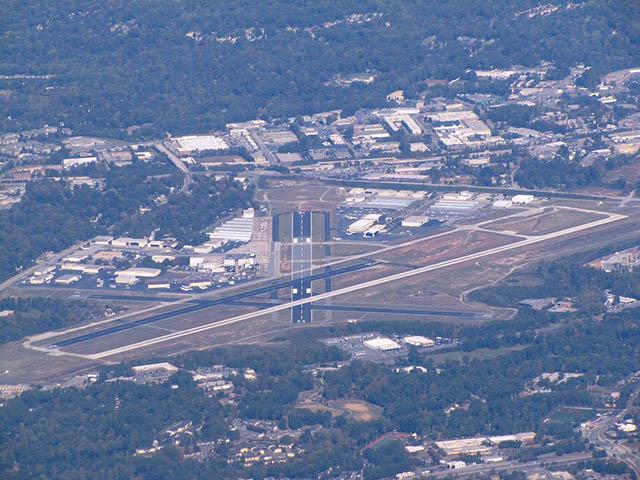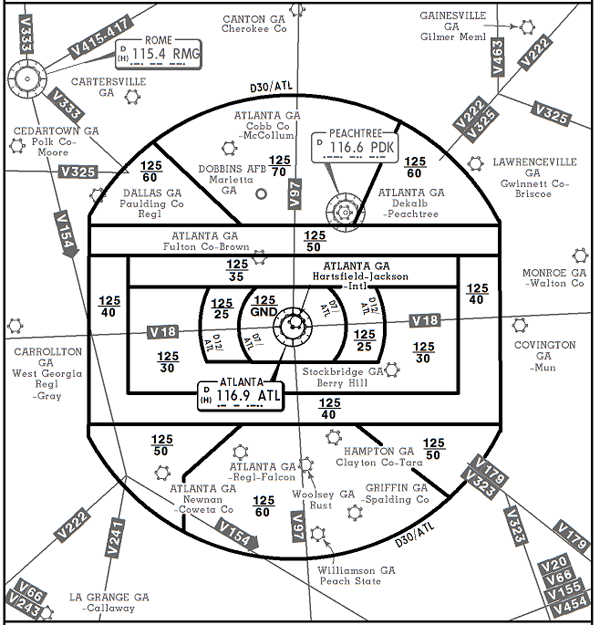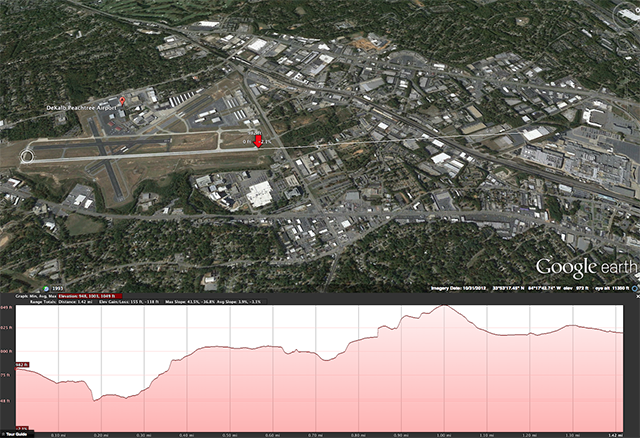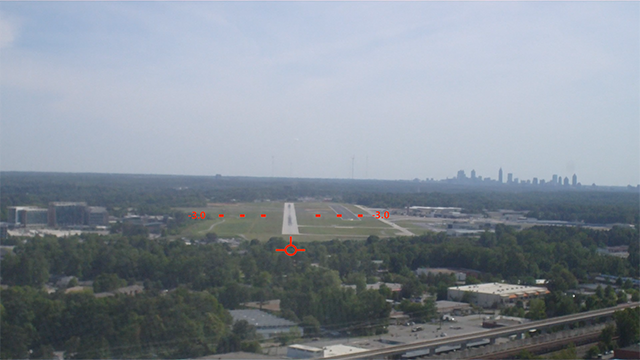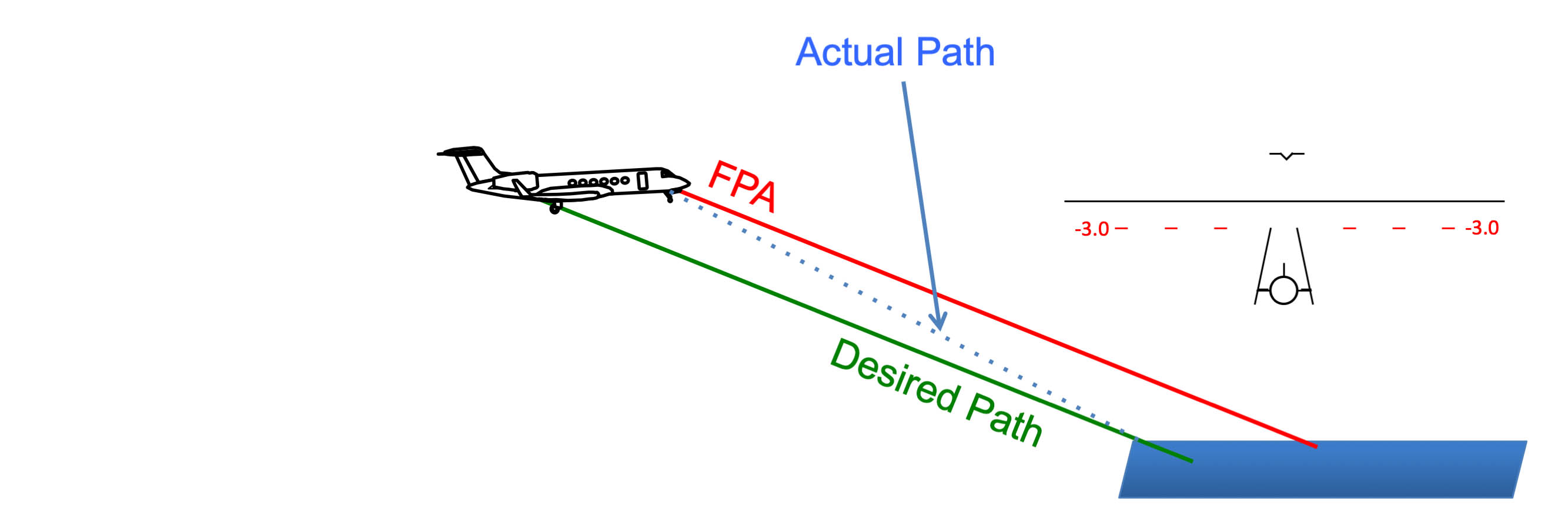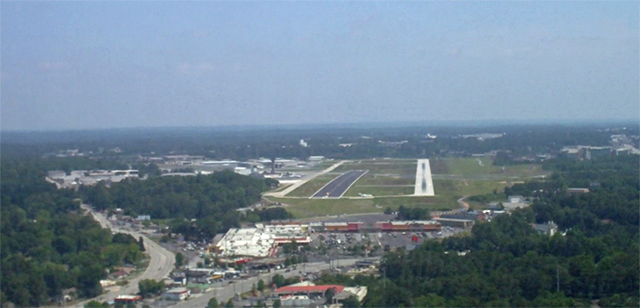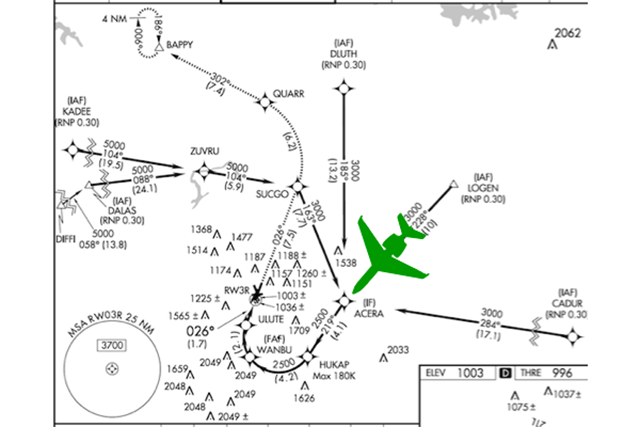This airport is incredibly friendly to corporate aviation, they really want our business. But you will more than likely be landing on runway 21L and you need to think about it before you see it for the first time.
— James Albright

Updated:
2015-12-20
It is a 6,001' runway with 1200' of displaced threshold over a bit of terrain rise, the ILS glide slope and PAPI appear to be all wrong, nearly halfway down the runway. But if you block out the fact there is all that runway behind you and just consider you still have almost 5,000 feet in front of you, it isn't so bad. But don't waste any more time with the flare than you have to, okay?

1
Overall considerations
Airport Risk Analysis
Only Runway 21L and 3R are long enough for Gulfstream operations. While 21L has an ILS, you will need RNAV(RNP) if you want precise electronic guidance to 3R. There is a VASI to 3R and PAPI on 21L.
Noise Considerations
- Voluntary Night Restriction. All operators are strongly encouraged not to fly between the hours of 11p.m. and 6 a.m. local time. Aero-medical and emergency operations are exempt from this request. PDK Airport Security monitors all arrival and departures and provides a listing of aircraft registration numbers to the Noise Abatement Information Office. A letter of non-compliance will be mailed to every operator that operates during this period to further educate them on the problems involved with using the airport at night and requesting their compliance and consideration in the future. The aviation community is being given the opportunity to demonstrate its sensitivity to the airport's close-in neighbors and communities. Your cooperation is requested & appreciated.
- Preferential Runway Program. During hours that the ATC Tower is operation, tower personnel will move operations to a northbound flow whenever possible. During hours that the tower is closed, pilots are requested to DEPART on runway 03R when wind conditions, traffic and safety permits. IN NO CIRCUMSTANCE SHOULD SAFETY BE COMPROMISED IN THE PILOT'S SELECTION OF RUNWAY.
- Noise Monitoring Program. The PDK Noise Information Office operates a Noise and Operations Monitoring System (NOMS) to measure actual noise levels of aircraft using PDK. Due to the effect on the community, all operators who produce a high noise event at a NOMS monitoring station, may be contacted. Monitoring stations are located in nearby residential areas.
- Use of Reverse Thrust. Limit the use of reverse thrust at other than idle power and limit the use of reverse thrust to perform early runway turnoff. Full length taxiways are available.
- NBAA Noise Abatement Procedures. For arriving and departing turbine business aircraft, PDK Noise Information Office recommends utilizing the NBAA close-in arrival and departure procedures.
Source: Dekalb Peachtree Airport
Gulfstream pilots should consider Noise Abatement Procedures / JAA Procedure 1.
- Noise Abatement Arrival/Departure Profiles Fixed Wing Aircraft. The PDK Noise Information Office has published procedures that include depictions of noise sensitive areas and suggested departure/arrival climb profiles that can be mailed or faxed free of charge. Call (770) 936-5440.
- Recommended Noise Abatement Instrument Approach Procedure. Attention instrument pilots, please use the Runway 21L GPS/RNAV Approach Procedure whenever possible. This is PDK's preferred instrument approach for noise abatement.
Source: Dekalb Peachtree Airport
Class B Considerations
2
Arrival considerations
Runway 21L
Consider this about Runway 21L
- 6001' — Total length of the runway
- 4801' — Landing distance beyond displaced threshold
- 3801' — Landing distance beyond PAPI
- 3743' — Landing distance beyond glide slope
The airport manager says the displaced threshold is due only to the approach end obstacle and has nothing to do with load bearing.
The elevation 1.0 nautical miles before the runway is about 100 feet above the runway. That doesn't seem like much until you first see it from a cockpit window at 2.0 nautical miles.
If you fly the ILS your aim point is almost halfway down the runway, your touchdown point will be halfway down the runway. You don't want to do that in just about any jet. We used to say, "I'll fly the ILS until the PAPI is in view, and then I will fly that." That gains you 58 feet.
What we've always done but never really admitted is push the nose down to steepen the descent angle to bring our eventual touchdown point closer.
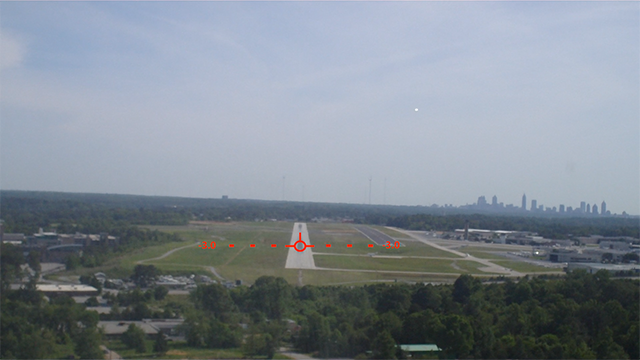
KPDK Runway 21L flight path vector and flight path angle on a normal aimpoint, about 1,000 feet beyond the displaced threshold
Once we are on a three degree glide path to a normal aimpoint, about 1,000 feet further than the displaced threshold, we bring the nose up for a normal, three degree descent rate. Of course having a HUD with a FPV and FPA makes this easier.
The flight path angle helps us establish the proper glide path even when the PAPI and ILS glide slope are not aimed where we want them. More about this: Landing / Flight Path Angle and Vector.
Is it possible to fly a stable approach to this runway? I think so, but we are usually tempted to aim for the displaced threshold — I am guilty of this now and then — so try hard to shoot for a normal aim point and don't waste any runway on an exaggerated flare. Video: PDK ILS 21L.
Runway 03R
The problem with Runway 3R is there are a ton of obstacles that will be at your height as you roll into your visual right base. While you might not have RNP AR authorization, you should consider pulling up the chart for a look at where each tower sits. If you have the capability of displaying the aircraft over the approach plate, as shown, even better.
Video: PDK Visual 03R Right Base, the normal solution.
Video: PDK Visual 03R Left Base, not common, just make sure you keep an eye on the buildings.
3
Departure considerations
The airport can be incredibly busy, especially when the weather is good. Expect takeoff clearance when you least expect it with instructions to hurry up, there is an airplane on a two mile final.
References
(Source material)
